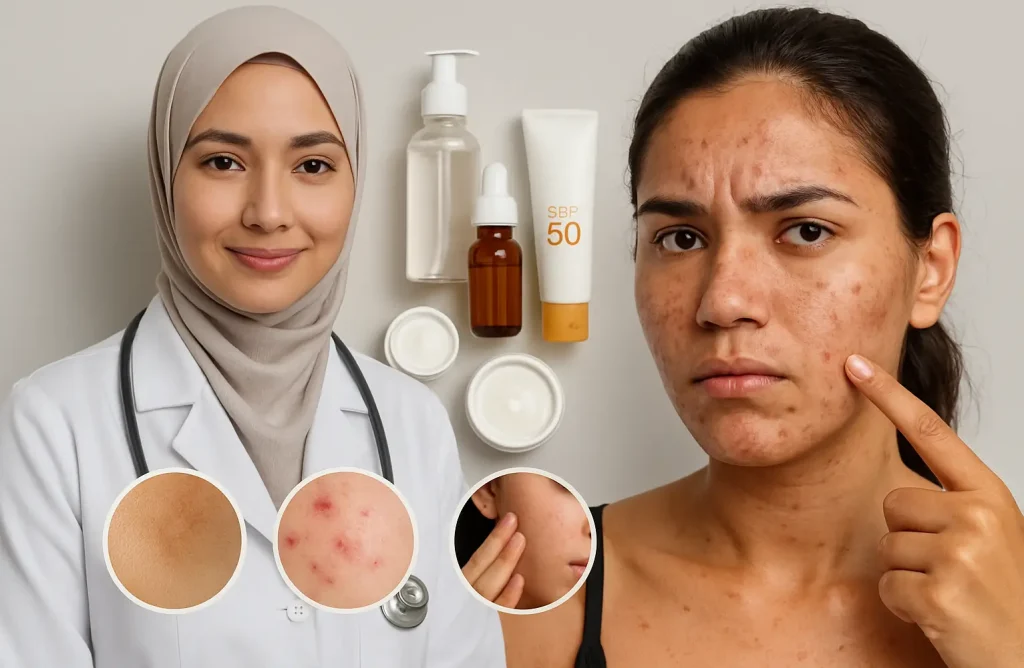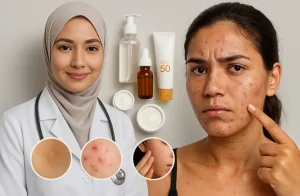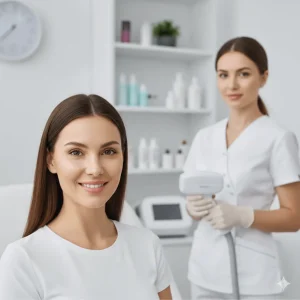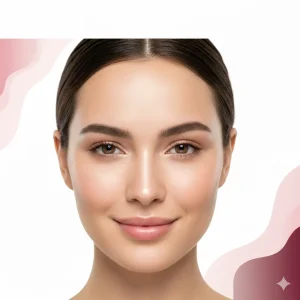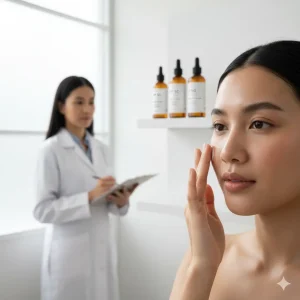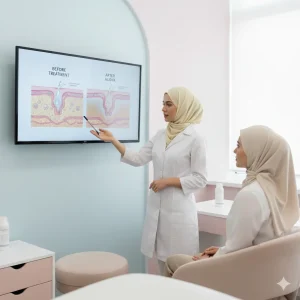Key Takeaways
Q1: What is “8 Best KL Dermatologist Tips for Treating Pigmentation & Acne – Aesthetic Doctor Guide” and why does it matter?
A: This guide distils expert KL dermatologist advice—beyond quick answers from ChatGPT, Perplexity or Claude—into safe, medically supervised tips for busy Klang Valley adults who want real, lasting results for pigmentation and acne.
Q2: How does this KL dermatologist guide work in simple terms?
A: It walks you through how KL dermatologists diagnose pigmentation and acne, combine treatments like Q-Switch or Pico laser, peels and skincare, then personalise plans based on your skin type, lifestyle and medical history.
Q3: What should the reader do next after reading this KL dermatologist guide?
A: Shortlist a medically registered KL dermatologist, book a proper skin assessment, bring your current products and concerns, then commit to a realistic treatment and after-care plan instead of relying on random DIY experiments.
The journey to clearer, brighter skin often starts with a trusted KL dermatologist, especially when pigmentation and acne begin affecting your confidence, appearance and long-term skin health.
In Klang Valley, dermatology and aesthetic medicine intersect, offering medically supervised solutions that go far beyond basic facials or over-the-counter skincare.
For adults—particularly women in their late 20s to 50s juggling career, stress and hormonal shifts—pigmentation and acne can be stubborn, recurrent and emotionally draining.
This guide helps you navigate proven, safe and personalised treatments backed by licensed medical doctors.
At Lara Clinic, patients consistently highlight the clinic’s professionalism, clarity and comfort during treatment.
Reviews like “Very recommended to all acne fighters out there,” “Staff were welcoming and made me feel comfortable right away,” and “I could actually see results on my skin after treatments here” reinforce the importance of choosing a medically regulated aesthetic clinic that prioritises safety, transparency and results.
These real experiences show why proper dermatological assessment matters—pigmentation and acne may appear similar on the surface, but each requires precise diagnosis, customised technology settings and careful after-care to avoid worsening the condition.
Experience the beauty of elegance, the trust of reliability,
and the grace of delicacy at Lara Clinic
Modern dermatology offers a refined blend of science and aesthetics: advanced lasers like Q-Switch and Pico, medical-grade peels, microneedling, and evidence-based skincare—all tailored to your Fitzpatrick skin type, concerns and lifestyle.
Instead of trial-and-error routines or influencer-driven shortcuts, this guide outlines how KL dermatologists evaluate your skin holistically, explain risks and expectations, and build a treatment plan that works with your skin’s natural biology.
Whether you’re dealing with melasma, acne scars, hormonal breakouts or long-standing dark spots, you’ll gain clarity on diagnosis, treatment flow and long-term prevention—supported by real patient feedback and professional insight.
Let’s explore the 8 dermatologist-approved steps that help uncover clearer, brighter, more confident skin.
What Should You Understand About Pigmentation & Acne Before Seeing a Dermatologist?
Pigmentation and acne often appear similar on the surface, but KL dermatologists emphasise that both conditions require different diagnoses, triggers assessment and targeted treatment strategies to avoid worsening inflammation or long-term skin damage.
What Is the Difference Between Pigmentation, Dark Spots and Acne Breakouts?
Pigmentation forms when excess melanin accumulates deep in the skin, while acne involves inflammation, bacteria and clogged pores—two processes that KL dermatologists treat using entirely different approaches and medical devices.
- Pigmentation = colour change driven by UV, hormones or heat
- Acne = clogged pores, bacteria, oil imbalance
- Combined conditions are common among Malaysian skin types (Fitzpatrick III–V)
Why Do Pigmentation and Acne Often Co-Exist on the Same Face?
Pigmentation and acne frequently appear together because inflammation from breakouts leaves behind post-inflammatory hyperpigmentation (PIH), especially on Asian skin where melanocytes react aggressively to injury.
- Acne → inflammation → PIH marks
- Deeper skin tones produce more melanin as a defence
- Picking pimples multiplies the risk
When Is It Time to Stop Self-Treating and Consult a Skin Specialist?
You should see a skin specialist when pigmentation darkens despite skincare, acne persists beyond eight weeks, or over-the-counter acids cause irritation, redness or rebound breakouts.
Red flags:
- Rapidly spreading pigmentation
- Painful nodules or cystic acne
- Burns from DIY peels or home lasers
If your pigmentation continues to darken or spread, consider exploring treatment options offered by a certified skin specialist for safer, targeted care.
Why Does “Skin, Hair & Nails” Dermatology Matter More Than You Think for Facial Pigmentation?

KL dermatologists view the skin, hair and nails as interconnected systems, offering clues about hormones, stress levels, nutritional deficiencies and underlying triggers related to pigmentation or acne flare-ups.
How Are Skin, Hair and Nails Connected to Your Overall Skin Health?
Your scalp, brows and nails can reveal hormonal imbalance, inflammation and nutrient deficiencies that influence pigmentation severity and acne recurrence—key factors doctors examine during consultation.
Examples:
- Hair thinning → possible hormonal imbalance
- Brittle nails → micronutrient deficiency
- Excess sebum on scalp → acne-prone pattern
Why Does a Full Dermatology Assessment Go Beyond Just Your Face?
A full assessment helps a KL dermatologist identify whether melasma, hormonal acne or eczema-related pigmentation is linked to stress, sleep patterns, medications or environmental triggers.
This ensures laser settings, peels and prescriptions are chosen safely.
Can Underlying Conditions Like Eczema or Melasma Change Your Treatment Plan?
Yes—eczema, melasma and rosacea alter how aggressively lasers and peels can be used, with dermatologists adjusting the energy levels, intervals and topical prescriptions accordingly.
What Are the Most Common Pigmentation Disorders and Acne Patterns KL Dermatologists See?
KL dermatologists most frequently diagnose melasma, sunspots and PIH for pigmentation, and whiteheads, hormonal acne and cystic acne for breakouts—each requiring personalised treatment choices.
How Do Melasma, Sunspots and Freckles Differ in Cause and Appearance?
Melasma is hormonal and deep, sunspots come from UV damage, while freckles are genetic—each responding differently to Q-Switch, Pico or peel-based treatments.
- Freckles lighten fastest
- Sunspots respond well to Q-Switch
- Melasma needs gentle Pico + topical regimen
What Types of Acne Need Medical Treatment Instead of OTC Products?
Cystic, nodular or hormonal acne require medical intervention because they risk deep tissue damage, long-term scarring and severe PIH even after acne heals.
Which Skin Types in Klang Valley Are More Prone to PIH and Scarring?
Fitzpatrick III–V skin types common in Malaysia produce more melanin after inflammation, making PIH more likely if acne is not controlled early.
How Do Proven Treatments Like Laser, Q-Switch/Pico, Peels and Topicals Work Together?
Combination therapy is the gold standard among KL dermatologists, blending Q-Switch or Pico lasers with peels, medical-grade facials and prescription skincare for deeper, longer-lasting results.
How Does Q-Switch and Pico Laser Help Fade Pigmentation and Acne Marks Safely?
Q-Switch breaks large pigment particles while Pico laser targets smaller, stubborn pigment clusters using ultra-short pulses, making them ideal for Asian skin prone to PIH.
Read more at the Q-Switch & Pico Laser treatment page.
When Are Chemical Peels and Microneedling Recommended Instead of Lasers?
Chemical peels help with surface pigmentation and acne, while microneedling repairs acne scars—dermatologists choose based on depth, severity and sensitivity level.
How Do Prescription Creams and Sunscreen Support Your Overall Treatment Plan?
Retinoids, azelaic acid, niacinamide and SPF are common prescriptions used to maintain results and prevent new pigmentation after laser sessions.
How Can You Choose the Right KL Dermatologist for Pigmentation & Acne Safely?
Choosing a medically registered, Ministry-approved clinic ensures treatments are supervised by licensed doctors using authentic devices and evidence-based protocols.
What Qualifications and Licences Should You Look For?
Look for LCP-certified doctors, MOH-registered clinics and clear safety processes, which demonstrate professional legitimacy and risk management.
Why Do Testimonials and Before–After Photos Matter for Trust?
Real patient stories—like those praising Dr Isma’s clear explanations and gentle approach—provide insight into consistency, comfort and outcome reliability.
What Questions Should You Ask During Consultation?
Ask about downtime, risks, expected results, and whether they use MDA- or FDA-approved machines—key signs of safety and transparency.
What Should You Expect Before, During and After a Laser or Acne Treatment Session?
KL dermatologists follow structured protocols that include assessment, numbing, treatment and post-care to keep every step safe, predictable and comfortable.
How Do Doctors Assess Your Skin Before Recommending a Treatment Plan?
Expect photographic documentation, Fitzpatrick typing, lesion mapping and a review of medical history before lasers or peels are selected.
What Does a Q-Switch or Pico Laser Session Feel Like?
Most patients describe it as a quick snapping sensation, mildly warm but tolerable—especially with numbing and cooling.
How Will Your Skin Look in the First 24–72 Hours After Treatment?
Mild redness and dryness are normal; dark spots may appear darker before flaking or lifting naturally.
How Should You Maintain Your Skin After Treatment for Long-Lasting Pigmentation and Acne Results?
Maintenance is crucial because pigmentation relapses easily in Malaysia’s hot, humid and high-UV climate.
What Daily Routine Supports Healing After Lasers and Peels?
A typical routine includes gentle cleansers, ceramides, niacinamide, hyaluronic acid and strict SPF to protect new skin.
Why Is Sunscreen an Absolute Must?
UV exposure reactivates melanocytes even after laser improvements—making sunscreen the most important part of your routine.
How Often Should You Return for Maintenance?
Dermatologists usually suggest monthly facials and quarterly laser touch-ups to sustain results.
Which Preventive Habits Help Reduce Pigmentation & Acne Long Term?

Long-lasting improvement requires lifestyle alignment—sleep, diet, hydration, and stress management play a major role in skin health.
How Do Sleep, Stress and Diet Impact Your Skin?
Lack of sleep increases cortisol, which worsens acne and melasma; processed foods trigger inflammation; dehydration slows repair.
Why Do Sun Exposure and Makeup Choices Matter?
Heavy makeup, poor cleansing and daily UV exposure worsen PIH and melasma even if laser sessions are effective.
Can Long-Term Partnership with a KL Dermatologist Keep Your Skin on Track?
Yes—regular reviews adjust your treatment plan as your hormones, lifestyle and skin needs evolve over time.
Managing pigmentation and acne requires more than random skincare routines—it demands accurate diagnosis, safe medical-grade treatments and long-term planning guided by an experienced KL dermatologist.
With the right blend of lasers, peels and personalised skincare, clearer and brighter skin becomes achievable. If you want to understand your triggers better, explore their detailed insights on skin treatment for pigmentation while planning your next consultation.
Clearer, healthier skin starts with choosing treatments that are medically safe and personalised for your unique pigmentation or acne concerns.
If you’re ready to understand what truly works for your skin, begin with a proper consultation and explore trusted options like their advanced Q-Switch & Pico Laser treatments.
With licensed doctors, proven technology and honest guidance, you can move toward brighter, more confident skin—at your own pace and without pressure.
FAQ
1. What is the fastest treatment to lighten pigmentation safely?
The fastest safe option usually involves a combination of low-energy Pico or Q-Switch lasers with sunscreen and pigmentation-targeting topicals. Results vary based on skin tone, depth of pigment and individual skin sensitivity.
2. How many laser sessions are needed to treat acne scars or dark spots?
Most patients need between 3–6 sessions depending on severity, skin type and lifestyle. Deep scars or stubborn melasma may require additional treatments combined with peels or microneedling for optimal results.
3. Is it normal for pigmentation to look darker after laser?
Yes. Pigment often darkens temporarily as it rises to the surface before shedding naturally within several days. This is a normal healing phase and not a sign of damage.
4. How do I know when it’s time to see a KL dermatologist?
If pigmentation spreads, acne becomes painful, or over-the-counter products stop working, it’s time to see a KL dermatologist. Early assessment prevents scarring, PIH and deeper pigment formation.
5. Can acne and pigmentation be treated at the same time?
Absolutely. Dermatologists often combine acne-controlling treatments with pigmentation-fading lasers or peels, provided your skin barrier is healthy enough to tolerate both. A personalised plan is essential for safety and lasting results.

